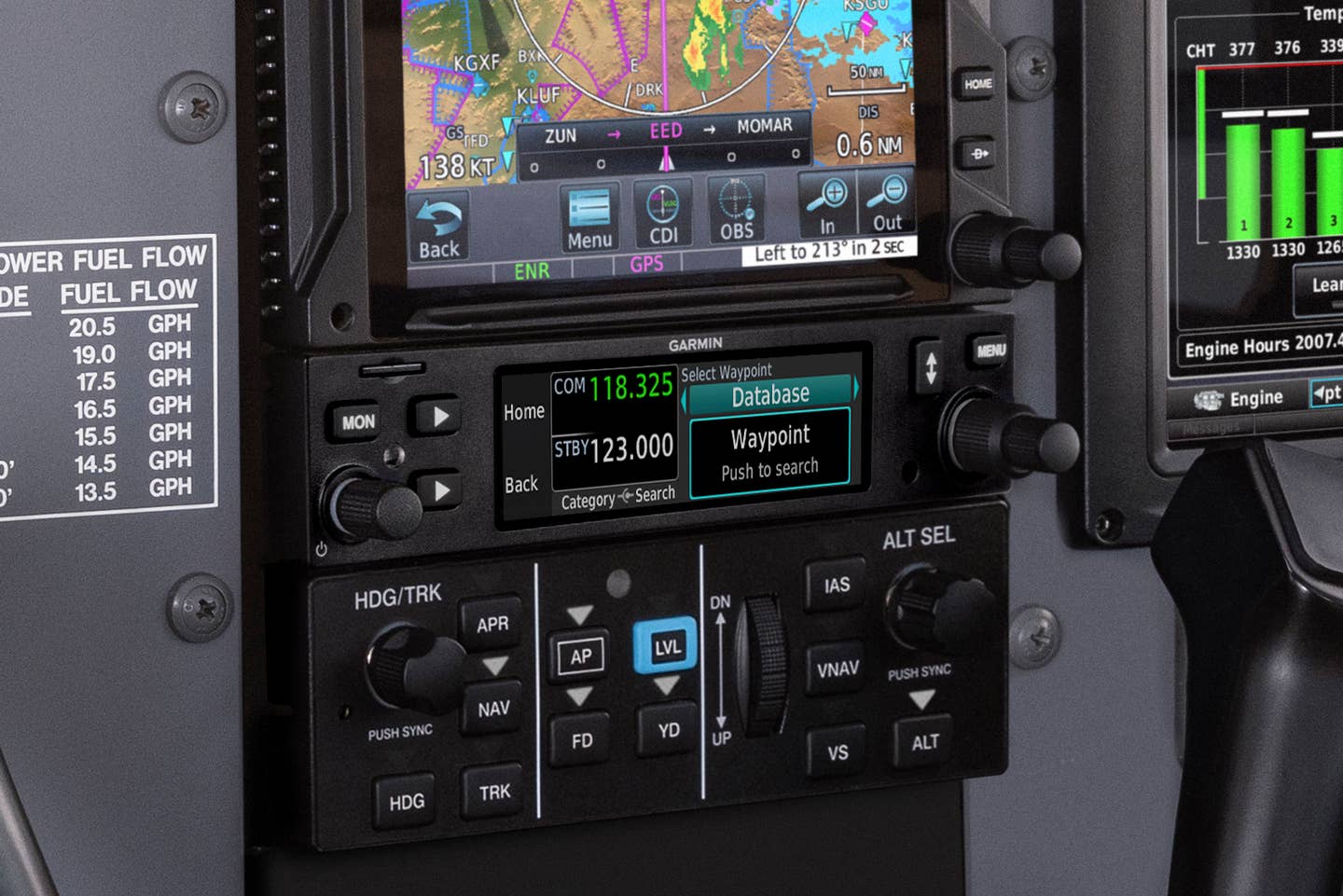 Dynon's D1 is a portable GPS-based Primary Flight Display that runs on battery power. |
Twenty-first-century private pilots benefit enormously from technologies like GPS, WAAS and iPads. Any pilot flying these days without portable navigation and electronic charting is very much behind the times. Yet, a majority of the airplanes flown by those pilots still feature 20th-century "steam gauge" flight instruments. And while we all may look longingly at the amazing features offered by the latest glass panels, retrofitting that kind of equipment in old airplanes costs thousands to tens of thousands of dollars---in some cases, more than the airframe is worth!
Now Dynon, a vendor that sells mainly in the experimental and light-sport market, provides an alternative: The $1,425 D1 Pocket Panel puts a fully functional primary flight display (PFD) within reach of pilots of literally any airplane ever made---even those without a built-in electrical system. There's just one catch: It's not certified and thus can't legally replace any required instruments. Instead, it supplements them, much like a portable GPS can supplement built-in navigation instruments.
Physically, the D1 is a 3.3x3.5x1.1-inch box, the top of which is mostly taken up by a bright 3.5-inch diagonal LCD display. It has a card slot for Secure Digital (SD) data-storage cards, a USB port, sockets for an external GPS antenna and power, two buttons and a rocker switch. Like other uncertified portable devices, the D1 can't be permanently mounted in an airplane, but Dynon offers several clever mounting options, including a suction-cup mount and a clever clip mount that works in any empty 3.5-inch instrument hole, requiring no tools to install or remove---both mounts are included (along with an external GPS antenna and 12-volt power plug) in the box, so there's nothing more to buy.
Once the D1 is mounted, you can power it up using one of the buttons on top of the bezel---at which point, you'll see Dynon's logo and disclaimer text warning that the unit isn't certified or a legal replacement for conventional flight instruments. Pressing the side rocker switch displays a red X (to show that the instrument is inoperative) and a prompt to press the button again to enter alignment mode, which lets you adjust the D1 display for the pitch and roll attitude of your aircraft. You may want to do that again in flight, as I found that nose level on the ground and in the air were very different.
In flight, the D1 is little short of amazing: Roll and pitch displays perfectly match those from the mechanical attitude indicator, and the inclinometer matches the skid ball on the turn coordinator. The unit displays GPS-based altitude, groundspeed, and track where a certificated PFD would show barometric altitude, airspeed and heading. On the calm day when I tested the unit, this resulted in displayed altitude about 100 feet high, but the speed and track were dead on. The unit also provides visual indications of turn rate and climb/descent. One limitation: The unit isn't designed for aerobatic use---it's limited to angular rates of 150 degrees per second, but will automatically recover after a few seconds of straight and level flight.
An instrument approach can be flown using it (and cross-checking altitude with the mechanical altimeter) at least as precisely as using conventional round-gauge flight instruments, and far more safely than I'd be able to do on partial panel after a vacuum failure. The built-in battery (which offers approximately four hours operation, according to Dynon) makes the unit immune to electrical failures.
Besides functioning as an effective backup instrument, the D1 also provides an inexpensive way for pilots to familiarize themselves with PFD symbology and operation, which will become increasingly important as more airplanes are built with (or upgraded to) glass panels. And if there's a spare 3.5-inch instrument hold on the passenger side, a D1 will offer the copilot (or flight instructor) what amounts to state-of-the-art flight instrumentation.
I want to compliment Dynon for bucking the trend toward only providing electronic documentation---the D1 comes with a 40-page printed pilot's user guide, which I found invaluable in getting the unit up and running.
For more information, visit www.dynonavionics.com.

Subscribe to Our Newsletter
Get the latest Plane & Pilot Magazine stories delivered directly to your inbox





